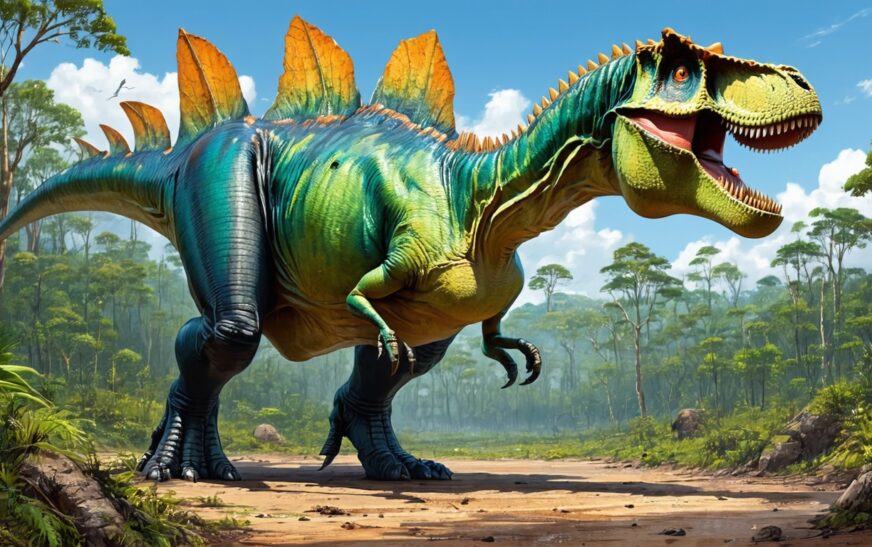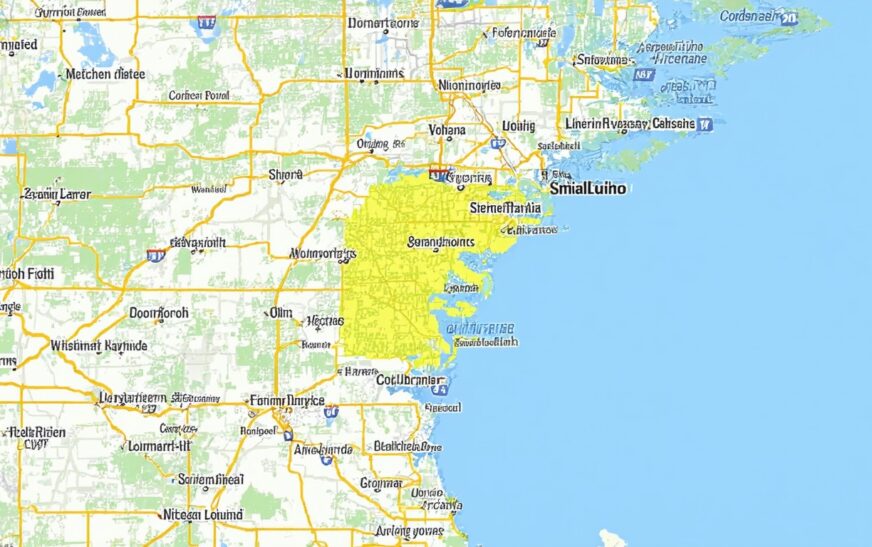Dinosaurs have fascinated us for generations, inspiring curiosity with their enormous size, mysterious behaviors, and unique anatomical adaptations. One of the most intriguing questions that has surfaced in online searches is: What dinosaur has 500 teeth? The answer leads us to a lesser-known but remarkable genus—Nigersaurus. With its hundreds of teeth specially designed for ground-level grazing, Nigersaurus challenges the stereotypes of toothy, ferocious predators by instead offering a glimpse into the diversity of dinosaur diets and lifestyles. This article explores the facts, paleontological discoveries, and enduring mystery behind Nigersaurus.
The Nigersaurus: A Snapshot of a Groundbreaking Discovery
Discovered in the rich fossil beds of the Sahara Desert, Nigersaurus taqueti is unlike any dinosaur previously unearthed. Unearthed by the famed paleontologist Paul Sereno and his team in the late 1990s, the Nigersaurus specimen dramatically shifted our understanding of herbivorous dinosaurs.
“Nigersaurus is the strangest dinosaur I’ve ever seen, and its mouth has more teeth than a piano keyboard,”
— Dr. Paul Sereno, National Geographic, 2007
Nigersaurus lived approximately 110 million years ago during the middle Cretaceous period. Its fossils were first discovered in Niger, hence the name. It belongs to the Rebbachisauridae family, a group of sauropods—long-necked, herbivorous giants that roamed ancient Africa and South America.
Why Did Nigersaurus Have 500 Teeth?
The immense number of teeth in Nigersaurus is one of its most distinctive features. Unlike the familiar carnivorous teeth of a T-Rex or the leaf-stripping incisors of Triceratops, Nigersaurus’s teeth were tiny, narrow, and packed closely along its wide, squared-off muzzle.
Unique Adaptation for Feeding
Nigersaurus was a low-level grazer, similar in ecological niche to a modern cow. Its 500 substantiated teeth were arranged in rows, constantly replenished throughout its life. These teeth formed a conveyor belt system—when one tooth wore out, another would slide into its place.
The table below summarizes Nigersaurus’s dental features versus other well-known dinosaurs:
| Dinosaur | Tooth Count | Tooth Shape | Diet Type | Feeding Height |
|——————|————-|—————————-|—————-|———————|
| Nigersaurus | ~500 | Small, needle-like, packed | Herbivore | Ground-level (≤1m) |
| Tyrannosaurus rex| ~60 | Large, conical, serrated | Carnivore | Upright/Active Hunt |
| Triceratops | ~800 (beaks + dental batteries, not all at once) | Shearing, flat | Herbivore | 0.5–2 m |
| Brachiosaurus | ~50 | Peg-like, sparse | Herbivore | Tall tree-level |
Anatomy and Size: What Else Makes Nigersaurus Special?
Beyond its extraordinary teeth, Nigersaurus sported anatomical features that further set it apart from its sauropod cousins.
Body Structure and Skull
Despite being a sauropod, Nigersaurus was relatively modest in size: around 9 meters (30 feet) long and weighing about 4 tons. Its most notable skeletal trait was its fragile, lightweight skull—so thin in areas that it was nearly translucent under light. This head design was likely necessary to support the broad, tooth-rich snout without creating burden on its long neck.
Additionally, CT scans reveal that Nigersaurus had one of the shortest necks among sauropods, with its mouth always kept close to the ground. The weirdly broad muzzle functioned as a natural lawnmower, sweeping ferns and other soft plants off the Cretaceous floodplains.
The Paleobotany of Nigersaurus: What Did It Eat?
Botanical studies suggest that Nigersaurus coexisted with a lush variety of Cretaceous flora, including horsetails, ferns, and early flowering plants. Its dental batteries weren’t suitable for chewing tough branches or fibrous cycads, but were perfect for cropping soft vegetation in massive quantities.
“The Nigersaurus was the vacuum cleaner of its time, optimized for non-stop ground-level grazing on the softest plants.”
— Dr. Jeffrey Wilson, University of Michigan
Fossil Discovery and Scientific Impact
How Was Nigersaurus Discovered?
The first fragments of Nigersaurus were found in the 1970s, but it wasn’t until the late 1990s and early 2000s that well-preserved skulls and postcranial remains came to light. Dr. Paul Sereno’s expeditions in the Elrhaz Formation of Niger revealed nearly 80% of the skeleton, including the iconic skull with its 500-tooth jaw.
Contribution to Paleontology
The Nigersaurus’s dental and skeletal peculiarities fundamentally altered our assumptions about sauropod evolution and the diversity of prehistoric herbivory. Its fossilized remains catalyze ongoing debates about dinosaur feeding mechanics, soft-tissue adaptation, and niche partitioning in ancient ecosystems. For more on fossil discoveries and their significance, see this resource [[LINK url=”https://www.example.com/fossil-record-dinosaur-evolution” anchor=”fossil record and dinosaur evolution” reason=”it offers deeper context on how paleontology interprets key dinosaur discoveries”]].
Nigersaurus in the Public Imagination
Although not as famous as T-Rex or Velociraptor, Nigersaurus has become an internet sensation, partly due to its unique dental arrangement. The phrase “what dinosaur has 500 teeth” became a trending search, illustrating how obscure paleontological facts can capture widespread public attention. Educational outreach by museums and kids’ dinosaur books have since made Nigersaurus a staple introduction to the world of unusual prehistoric adaptations.
Nigersaurus Compared to Other Sauropods
Understanding Nigersaurus is easier when looking at its close relatives and how their evolutionary paths diverged. Here’s a comparative table highlighting key sauropod differences:

| Feature | Nigersaurus | Diplodocus | Brachiosaurus | Apatosaurus |
|——————-|————-|—————|——————-|——————|
| Length | 9m (30 ft) | 24m (79 ft) | 22m (72 ft) | 22.8m (75 ft) |
| Weight | 4 tons | 15 tons | 35 tons | 16-23 tons |
| Teeth Arrangement | Dental batteries (500+) | Peglike (numerous but fewer) | Loosely spaced | Blunt, peglike |
| Feeding Style | Ground-level | Sweeping low | High browsing | Varied |
Nigersaurus exemplifies how evolution can drive highly specialized adaptations, even among closely related species.
Summary: Why Nigersaurus Still Fascinates Paleontologists
Nigersaurus stands out in dinosaur science for its unparalleled dental specialization and for expanding our concept of what a sauropod could be. Its discovery challenges the common image of massive, treetop-grazing ‘long necks’ and introduces a marvel of ground-level, high-efficiency grazing—a mouth equipped like a modern harvesting machine.
Its fragile skull, short neck, and “tooth battery” jaw remain a testament to nature’s capacity for innovation. As paleontologists uncover more about Cretaceous Africa, Nigersaurus will continue offering clues about ancient ecosystems, dinosaur evolution, and the extraordinary forms life can take. For a broader comparison of herbivorous dinosaurs, including their teeth and diets, check [[LINK url=”https://www.example.com/herbivore-dinosaur-anatomy” anchor=”herbivorous dinosaur anatomy” reason=”useful for readers to explore comparative anatomy and feeding strategies”]].
FAQs
FAQs
Q1: What dinosaur had 500 teeth?
A: The Nigersaurus is the dinosaur recognized for having around 500 closely packed teeth, adapted for ground-level grazing on soft plants.
Q2: What did Nigersaurus use its teeth for?
A: Nigersaurus used its numerous teeth to crop and strip soft vegetation at ground level, efficiently processing large quantities thanks to its constantly replacing dental batteries.
Q3: Was Nigersaurus a predator or herbivore?
A: Nigersaurus was a herbivore, with teeth and jaw structures optimized for eating soft ferns and flowering plants rather than meat.
Q4: Where was Nigersaurus discovered?
A: Fossils of Nigersaurus were discovered in the Elrhaz Formation of Niger, West Africa, a region rich in mid-Cretaceous dinosaur remains.
Q5: How big was Nigersaurus compared to other sauropods?
A: Nigersaurus was relatively small for a sauropod, about 9 meters (30 feet) long and weighing 4 tons, whereas some other sauropods exceeded 70 feet and tens of tons.
Q6: Why is Nigersaurus important to science?
A: The discovery of Nigersaurus highlights the diverse adaptations within sauropods and offers insight into how dinosaurs exploited different ecological niches during the Cretaceous period.




